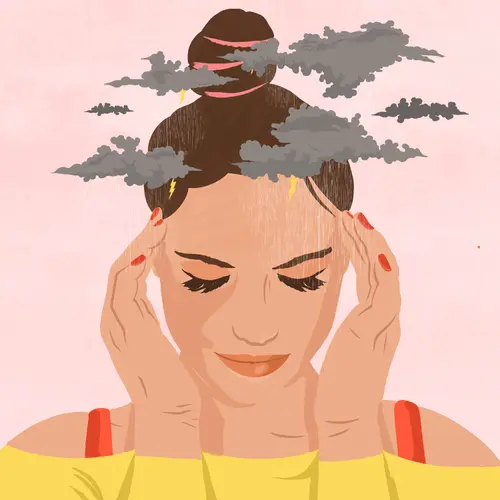A migraine can be complicated, with symptoms that change over hours or even days. They tend to move through several stages:
Prodromal Phase: Early Warning Signs
Hours before the migraine begins -- and sometimes even the day before -- many people may feel:
- Either unusually energetic and excitable or depressed
- Irritable
- Thirsty
- Cravings for specific foods
- Sleepy, with a lot of yawning
- The need to pee more often
In some cases, these symptoms before the headache can help doctors diagnose the problem as a migraine.
Aura Phase: Strange Feelings Start
About 1 in 3 to 1 in 4 people with migraines get an "aura" that begins before the headache or starts along with it. It may not happen with every headache, though.
An aura can include:
Changes in vision, such as:
- A flickering, jagged arc of light. It may have a complicated shape. It usually appears on the left or right side of your vision. Over a few minutes, it may get bigger.
- A blind spot in your field of vision. This problem -- combined with the flickering lights -- can make it hard to drive or focus your eyes on small objects.
- You might "see" images from the past or have hallucinations.
These symptoms may continue to get worse over the next several minutes.
Skin sensations. You might feel tingling or "pins and needles" in your body during an aura. It may also cause numbness. These feelings often affect the face and hands, but they can spread out across the body. They may continue to expand over the next several minutes.
Language problems. You may have a hard time communicating with others. Symptoms may include:
- Trouble expressing thoughts when you speak or write
- Trouble understanding spoken or written words
- Confusion
- Trouble concentrating
Attack Phase: The Headache Begins
The attack portion of a migraine can last from a few hours to several days. During this phase, you’ll probably want to rest quietly and find it hard to do your normal activities.
The pain of a migraine:
- Usually begins above the eyes
- Typically affects one side of the head, but it may happen to the entire head or move from one side to the other. It may also affect the lower face and the neck.
- Tends to feel throbbing
- May throb worse during physical activity or when you lean forward
- May get worse if you move around
Other symptoms that might happen during this phase:
Postdromal Phase: After It Stops
Following the most severe phase of the migraine, you may not feel well for up to a day. Symptoms of this post-migraine phase may include:
- Extreme tiredness
- Sluggishness
- Confusion
- Head pain that flares up when you lean over, move quickly, or get a rush of blood to the head
Your migraines may change over time, including how often they happen and how severe they are. Attacks may not always include all of these stages. Also, you may eventually get the migraine aura without having a headache. Since many of the symptoms found in these stages of migraines can also occur in very serious conditions such as stroke or seizures, seek immediate medical help for any new symptoms, or ones that have never been evaluated by your doctor.

